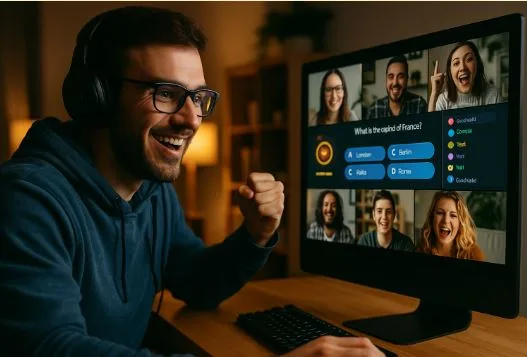The Social Side of Online Entertainment | How Digital Interaction is Changing
Social Aspects of Online Entertainment
Online entertainment has long ceased to be just relaxation in front of a screen. It has turned into a new format of interaction, where the boundaries between play, communication, and self-expression are blurred. A person is no longer just a spectator – they are part of the action, a participant in a collective experience.
In the digital world, leisure has become a reflection of social habits: some people seek teamwork, others – emotions, and some – recognition. Streams, virtual shows, interactive quizzes, and cooperative games – all of these are not merely technologies but forms of communication. Today’s online space resembles a living city: everyone has their place, their role, and an audience with whom they interact.
From Solitary Leisure to a Digital Community
Just 10–15 years ago, games and entertainment were mostly solitary activities. A player would turn on a console, launch a program, compete with the computer, and that was it. Now the situation has changed dramatically: many entertainment formats involve the participation of other people.
Modern platforms have created a new type of interaction. For example, Monopoly Big Baller at licensed casinos shows how a classic can become a collective event. Here, the wheel doesn’t just spin and dice don’t just roll – the host talks to participants, players discuss the course of the game in the chat, and the audience reacts in real time. All this creates the effect of shared presence, as if people were sitting together at one large table.
The new entertainment format is characterized by several features:
- Interactivity. The player influences the process rather than watching from the sidelines.
- Emotional synchronization. All participants experience the same moment, even if they are in different parts of the world.
- Formation of a community. Each project develops its own loyal audience with its traditions, memes, and unique atmosphere.
Thanks to this, digital entertainment has turned into a tool for uniting people.
The Effect of Presence and Shared Emotions
When a person joins an interactive show or participates in a live game, they feel part of something larger. The paradox is that physically they may be alone, but emotionally – among hundreds or even thousands of others.
Modern technologies make this possible. Among them are:
- High-quality transmission of image and sound. The reactions of the host, lighting, music, and dynamic shots make what’s happening tangible.
- Interactive interfaces. Players can write in the chat, react with emojis, take part in small polls, or influence the course of the game – all this strengthens the effect of “live participation.”
- Real-time synchronization technologies. The delay between action and response is minimal, so viewers feel not like spectators but as part of the team.
This “live presence” effect makes digital entertainment unique. People come not only for prizes or spectacles – they come to be part of a community, where emotions are genuine, where someone responds, laughs, or supports. Online space allows you to feel what is often missing offline.
The Influence of Digital Entertainment on Communication
Interactive formats are changing the very idea of what it means to “communicate.” It is no longer just an exchange of words. Emotions are expressed through reactions, actions, short phrases, or stickers. There is something natural about this – people are once again speaking in the language of gestures and feelings, only now in a digital form.
Online entertainment forms a new culture of communication:
- Democracy. Everyone can be heard – regardless of age, profession, or country.
- Hybrid roles. The player becomes a viewer, the viewer becomes a participant, and the host – a friend or adviser.
- Breaking down barriers. The gaming environment unites people from different cultures, turning the internet into a platform for mutual understanding.
In addition, such formats teach interaction skills. Team games develop strategic thinking and the ability to negotiate. Streaming communities form a culture of discussion. And live shows, where audience reaction matters, train empathy – the ability to sense the emotions of others.
Consequences of Digital Communication
Like any social environment, digital interaction has its advantages and disadvantages. On one hand, it makes the world closer: a person finds friends, receives support. On the other – it can lead to an excess of contact and the loss of personal boundaries.
Positive consequences:
- Opportunities for self-expression and exchange of experience;
- Development of intercultural communication;
- Formation of inclusive communities where participation, not status, is valued.
Negative aspects:
- Information overload and constant pressure to stay connected;
- Tendency toward digital addiction and the fear of “dropping out” of communication;
- Decline in the quality of real contacts amid an excess of virtual ones.
Nevertheless, the influence of digital entertainment on society cannot be described as one-sided. With a thoughtful approach, it becomes a tool for personal growth. People learn to cooperate, express themselves, and develop emotional intelligence.
Online entertainment reflects modern culture – dynamic, open, and emotional. It shows that people seek not just information or victory but genuine interaction. And as long as there is a desire to share emotions and be part of something greater, digital communication will continue to evolve – changing not only formats of leisure but also the very nature of human connection.






